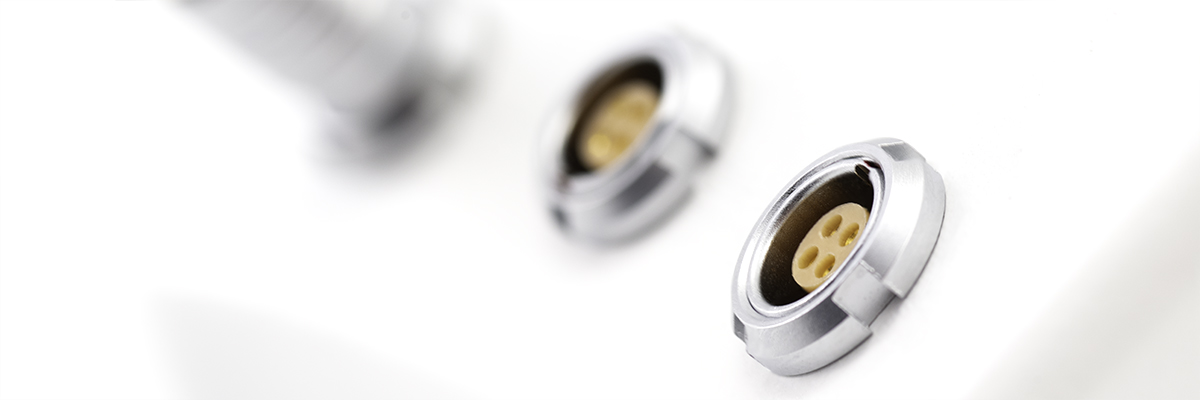Push-Pull Locking Cable Assemblies
and Connectors
Compatible with LEMO® 0B and ODU® MINI-SNAP L series
Tensility launches a high quality,
competitively priced line of Push-Pull Locking Connectors and Molded Cable Assemblies.
Specially designed with a locking feature, a wide temperature range of -50°C to
220°C these connectors are ideal for applications such
as medical, aerospace, automotive, and robotics that require secure and tight
connections. This series is compatible with LEMO® 0B and
ODU® MINI-SNAP L series.
Push-Pull Locking Connectors are available with cable and panel mount mounting
styles, solder cup termination, lengths of 20 mm, 21.5 mm, 35 mm, and 38 mm,
and 0° socket, plug, and panel socket configurations. These gold plated connectors
are available with 4 to 7 pins with center pin sizes of 0.5 mm and 0.7 mm and
an outer diameter of 7.0 mm. Cable assemblies are available off the shelf in 4C
to 7C with plug to stripped and tinned, plug to plug, and socket to stripped
and tinned variations and 24 or 28 AWG round wire.
All models are available for immediate delivery through Digi-Key or Arrow
Electronics. Custom configurations are
also available directly through Tensility.
VIEW PUSH-PULL CABLE ASSEMBLIES AND CONNECTORS
Key Features |
Applications |
|
|
|

FAQs
What is a push-pull connector?
A push-pull connector secures to the mating connector using a locking mechanism. The locking mechanism is released when the connector outer sleeve is pulled away from the mating jack. The action required to release the locking mechanism prevents the connector from unintentionally disconnecting during use.
When should you use a push-pull locking connector?
Push-pull connectors are ideal for extreme temperature, harsh environment, or applications where a locking connection and signal integrity is critical.
When should you NOT use a push-pull locking connector?
Push-pull connectors are not well suited for applications which require the connector to rotate during mating or where accidental disconnect is not a primary concern.
What is the quality of Tensility’s push-pull connectors compared to standard brand names?
Tensility’s PPL7 connectors are designed to be used interchangeably with all the major brands offering similar push-pull style connectors.
Tensility’s PPL7 cable assemblies use a TPU injected overmold to seal the solder joints and provide superior strain relief for increased cable life. Many other push-pull cable assemblies rely on a simple boot-style strain relief which provides minimal protection of the fragile solder joints. The boot-style strain relief often results in broken solder joints and many cable reworks, negating the amazing benefits of this locking connector design.